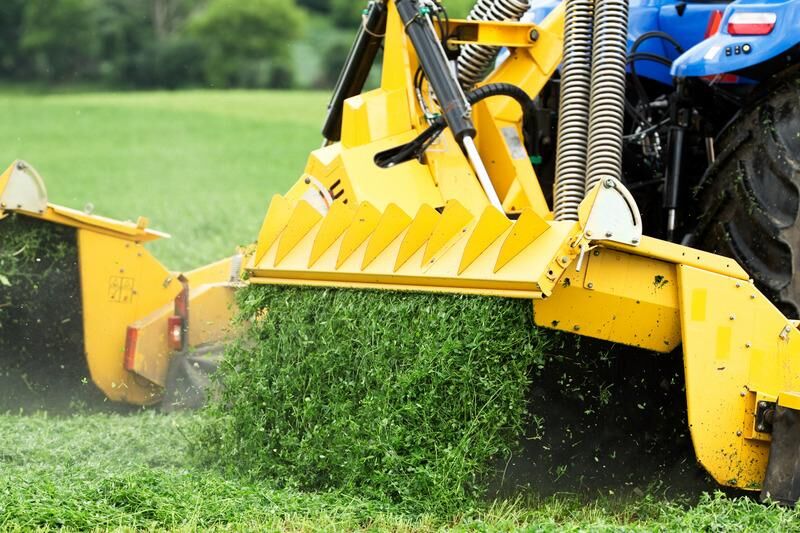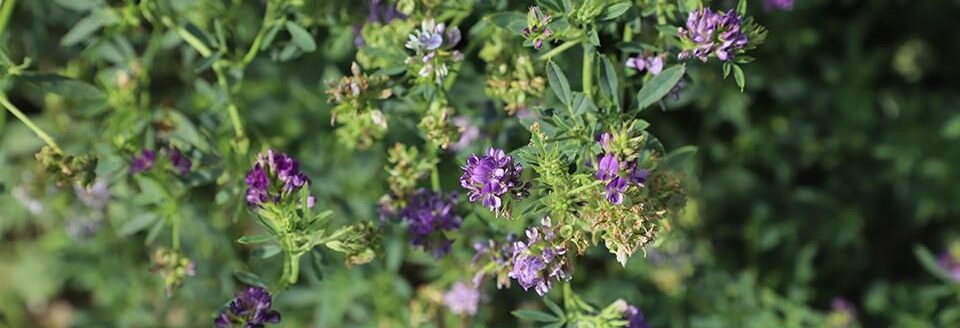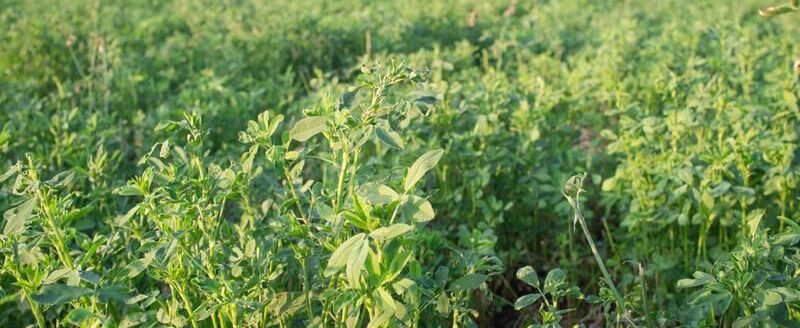Alfalfa seeded this spring is ready, or soon will be ready, to cut. Proper care and management now could have big impacts on cuttings later this year. Use the following harvest guidelines to get the most from your first-year alfalfa.
Seeding year alfalfa is different from established stands. Stems are spindly, roots are small and shorter, and growth is a little slower.
You can harvest seeding year alfalfa as early as 40 days after seedlings emerge. Again, this is 40 days after emergence, not planting. Alfalfa takes about 40 days to develop the ability to regrow from the crown after cutting. Plants cut before this point need at least one set of leaves remaining to regrow. So, if you need to cut early for something like weed or insect control, cut high.
Although alfalfa seedlings can be harvested 40 days after emerging, it’s better to wait until around 60 days after emergence, at late bud to early bloom stage, before the first cutting. Yield will be a little higher and plants will withstand weather stress easier with a little extra growth. This extra time also allows increased root development, helping avoid problems from soil compaction or surface soil dryness.
After the first cutting, regrowth of seedling alfalfa will become more similar to established alfalfa, giving you the opportunity for two or three cuts the first year.
One last point: While it may seem like a long way off, never cut seeding year alfalfa during the four-week period before a killing freeze. Winter injury can be severe due to reduced winterhardiness of new plants. Look ahead at the calendar now to plan when future cuts might be taken to avoid cutting during this sensitive time.
First year alfalfa can be productive if you just manage it right.




